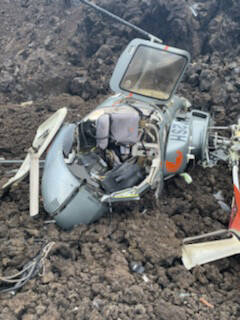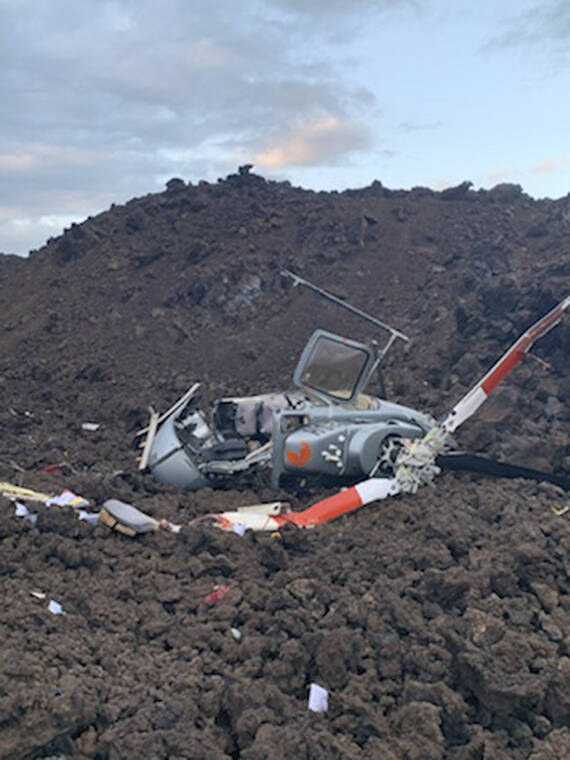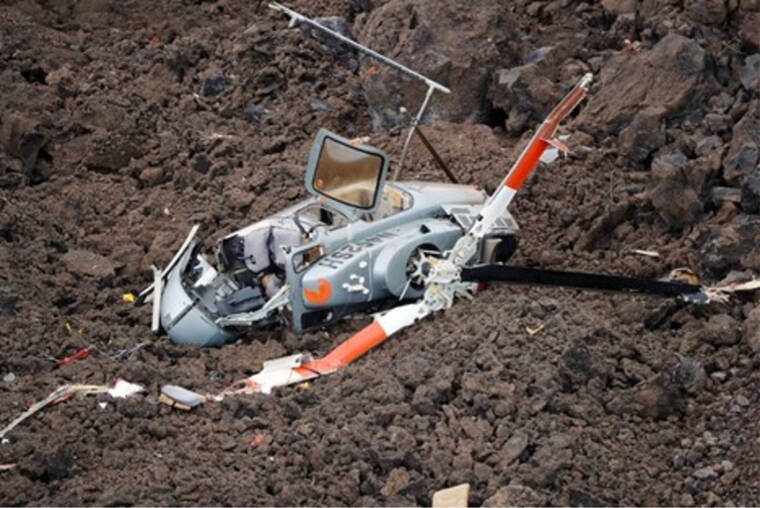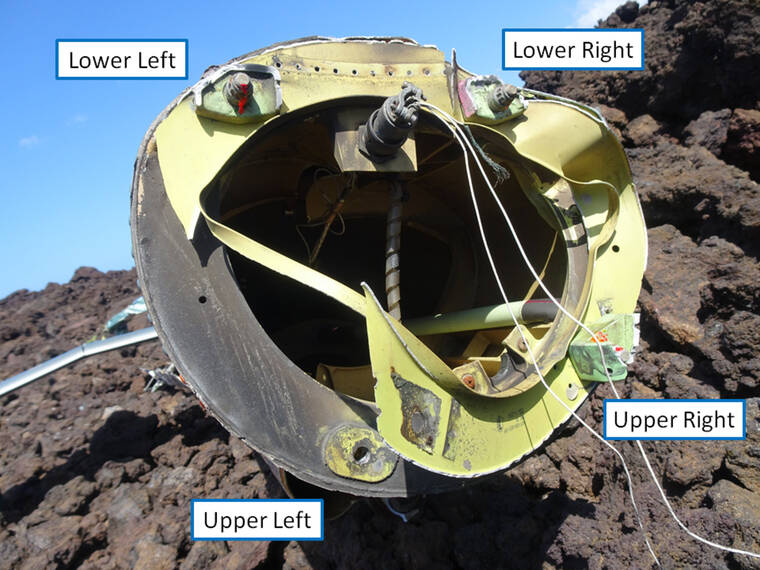NTSB: Tour helicopter experienced ‘violent upset’ before crash




A tour helicopter experienced a “violent upset” followed by an uncontrolled spin before crashing June 8 in a Ka‘u lava field injuring all six people aboard.
The crash, reported at 5:26 p.m., involved a Bell 407 four-blade, single-engine helicopter operated by Paradise Helicopters that had taken off at 5:01 p.m. from the Ellison Onizuka Kona International Airport at Keahole, according to a preliminary report on the aviation accident released Wednesday the National Transportation Safety Board.
According to the report, the helicopter was headed south and traveling about 140 mph to 146 mph at 500 feet to 600 feet after taking off.
“The pilot reported that the first part of the flight was normal; about 30 minutes into the flight, the helicopter experienced a violent upset, followed by an uncontrolled spin (yaw) to the right,” the NTSB preliminary report reads.
A female passenger, seated toward the back of the helicopter, reported that as the helicopter continued to spin, she saw something fall from the aircraft.
“However, she was not able to identify a specific part,” the report reads.
After the helicopter crashed into an area of rough, uneven, lava-covered terrain, it came to a rest on its left side. At that point, a passenger called to report the helicopter had crashed, according to the NTSB.
Emergency responders utilized both county helicopters to extricate the six injured persons from the remote crash site in a lava field between the Hawaiian Ranchos subdivision and South Point Road.
Three suffered serious injuries while the other three reported minor injuries. All six were taken to Kona Community Hospital for care; two were later flown to Oahu for further treatment while the others were released.
According to the preliminary NTSB report released Wednesday, an examination of the site of the crash found the helicopter’s tail boom came to a rest about 762 feet northeast of the fuselage, engine and main rotor system.
“The tail boom separated from the fuselage at the tail boom attach point,” the report reads. “The upper left attachment fitting fastener was not present, and the lower left attachment fitting was fractured and displayed fatigue signatures. The fasteners for the lower left, lower right, and upper right attachment fittings were present.”
The tail boom attachment fasteners were last checked on May 4, according to the report that noted the tail boom was installed in 2009, and hadn’t been removed between then and the crash. The crash occurred about 114 flight hours after the May 4 torque check.
Portions of the tail boom structure, aft fuselage structure, attachment fittings and fasteners were retained for further examination by the NTSB’s Materials Laboratory
According to the preliminary report, west-southwest winds of 10 mph were reported at the time of the crash. Visibility was estimated at 10 miles though conditions were overcast with a few clouds present over 4,900 feet at the time of the crash.
“K&S Helicopters is working closely with the pilot, NTSB, FAA, and Bell, to support a thorough investigation of the June 8 accident on the Island of Hawaii. All Bell 407 aircraft operated by K&S Helicopters have been voluntarily grounded out of an abundance of caution until further safety determinations can be made,” Calvin Dorn, chairman of Paradise Helicopters and CEO of its parent company, K&S Helicopters Inc., said in a prepared statement. “The company is in the process of reviewing the preliminary NTSB findings, and we will continue to work with investigators as they complete a final report.”
Hawaii has a thriving helicopter tour sector because of the flights that are extremely popular among tourists who want to see the islands’ stunning scenery from the aircraft that fly above rugged terrain that’s hard to reach otherwise.
According to an NTSB database, the Paradise Helicopters was involved in at least two previous accidents during sightseeing tours.
While returning from a sightseeing tour in 2005, a helicopter developed a “sudden vibration in the tail rotor pedals” followed by a loud crack or snap and then a loud banging noise, the NTSB said. It hit low trees and shrubs when the pilot landed in a clearing in a forest near the Big Island town of Pahoa. The pilot and four passengers were uninjured.
And as a Paradise helicopter pilot prepared to take off in 2009 for a sightseeing tour of Oahu for four passengers, the helicopter’s left landing gear collapsed, NTSB records said. The helicopter tilted to the left and was damaged, but no one aboard was injured.
The Associated Press contributed to this report.








